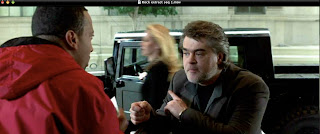Short Film Analysis : BBC Student Work
Clip 1- Coming Of Age
A boy suddenly finds himself facing huge responsibilities in
a dangerous, dystopian world set in 2035 Britain. He must overcome his fears
and face his enemies to save the people he loves. Coming of Age was shot on a
micro budget of just £150 with a tiny crew of just four people. The main
character is about 16 years old and he has to look after his sister who is
sick. The boy has lot of flashbacks of the troubles he has had to cope with
whilst trying to survive. The camera uses lots of techniques, a dominant one
being a close up to express depressive facial expressions and does really well
in representing sheer emotion. Some of the locations are very effective to the video;
long shots are used over hills to show his responsibility against the huge
scenery he is surrounded by. With the shots being so personal you really feel
like you are the main character and can identify with his struggles. The violence
is put into tension rather than horror, the quiet music and lack of dialogue
makes it a lot more meaningful and less artificial. When running the cutting
edits make the pace seem a lot faster and also uses the blackout edit which
increases its theme throughout.
Clip 2- Two & Two
In a drab, anonymous grey school governed by a strict
authoritarian regime, an apparently unremarkable day is turned on its head
following a seemingly ridiculous announcement.
Disbelieving at first, the all-male, identically
uniformed pupils are informed that what they had always been taught as fact is
no longer true. When the incredulous students speak out, what initially seems
laughably absurd becomes desperately real as they are forced to question how
far they will go to stand up for their beliefs. Two & Two is an allegory
for the absurdness of dictatorship and tyranny - and the resilience of the
human spirit. The editing cuts are hardly noticeable, the scene is shot in one
classroom so have few diverse angle shots, one being from the back of the room
to display the whole scene. When the main characters emerge they have
medium-close ups to display emotion such as anger and confusion.
Clip 3 - The Last Regal Kingsize
On the day of a militant religious gathering, Stewy, a
disturbed Protestant boy seizes his chance to join a gang of local delinquents.
For the prize of a packet cigarettes he entices a young boy out from the safety
of his home. The result is devastating. While their fathers march through the
decaying streets of Glasgow their sons take a sinister journey into the dark heart
of modern Britain.








